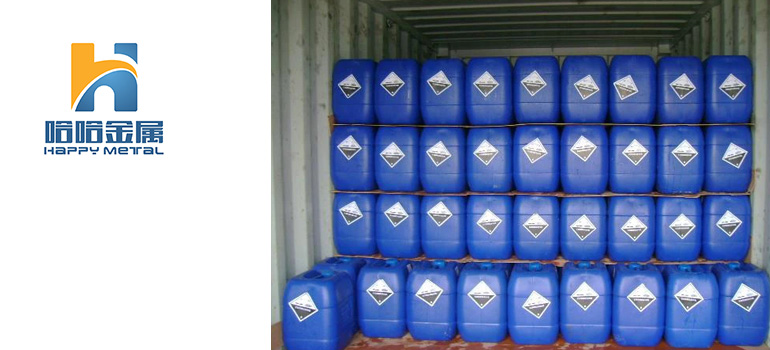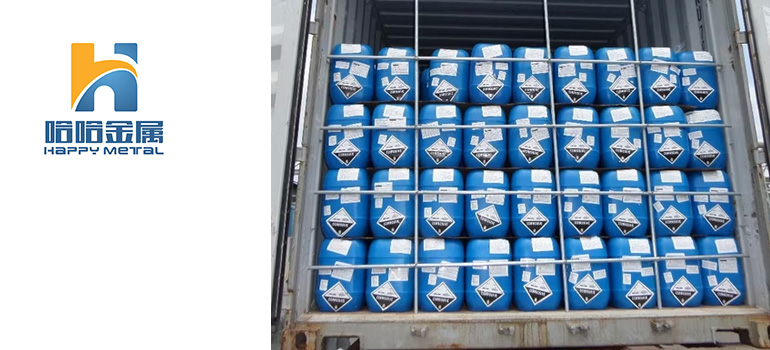Summary:
Food Grade Phosphoric Acid vs. Fertilizer Grade: Key Differences Explained
What is Food Grade Phosphoric Acid?
What is Fertilizer Grade Phosphoric Acid?
Key Differences Between Food Grade Phosphoric Acid and Fertilizer Grade
How to Identify and Choose the Right Phosphoric Acid Grade?
Why Understanding the Difference Between Food Grade Phosphoric Acid and Fertilizer Grade is Important
What is Food Grade Phosphoric Acid?
Food grade phosphoric acid is a highly purified form of phosphoric acid, widely used in the food and beverage industry. It is a colorless, odorless, and clear liquid. While its chemical properties are similar to regular phosphoric acid, food grade phosphoric acid undergoes strict quality control to ensure that it meets food safety standards, making it safe for consumption.
Definition and Uses of Food Grade Phosphoric Acid
Food grade phosphoric acid primarily functions as an acidulant, flavor enhancer, and preservative in food products. In the beverage industry, particularly in carbonated drinks, food grade phosphoric acid is used to add tartness and control the pH, ensuring a balanced flavor. It is also used in processing certain foods, such as dairy products and fruit juices, to enhance flavor and extend shelf life.
Another important use of food grade phosphoric acid is as a food additive to regulate pH levels during food manufacturing. This is crucial for the texture and appearance of certain products, such as candy and gelatin. Food grade phosphoric acid is closely monitored for purity, ensuring that it is free from harmful substances and complies with food safety regulations.
Common Applications of Food Grade Phosphoric Acid in the Food Industry
Food grade phosphoric acid has a wide range of applications in the food industry. In beverage production, it is primarily used as an acidulant, especially in sodas, lemon-flavored drinks, and some energy drinks. In these beverages, phosphoric acid not only adds acidity but also helps retain carbonation.
In food processing, food grade phosphoric acid is commonly used to regulate and stabilize the pH of foods. For example, it plays a role in controlling the pH of candy and juice production, improving product taste and stability. It is also used as a preservative to extend the shelf life of certain foods by inhibiting the growth of bacteria and molds.
What is Fertilizer Grade Phosphoric Acid?
Fertilizer grade phosphoric acid is a form of phosphoric acid that is primarily used in the production of fertilizers. Unlike food grade phosphoric acid, which is highly purified for consumption, fertilizer grade phosphoric acid is typically lower in purity and is specifically formulated for agricultural applications. It plays a vital role in providing the phosphorus needed for plant growth, an essential nutrient for crop development.
Definition and Uses of Fertilizer Grade Phosphoric Acid
Fertilizer grade phosphoric acid is a key ingredient in the production of various phosphate-based fertilizers. It is often used to manufacture products such as ammonium phosphate, superphosphate, and triple superphosphate, which are essential for enhancing soil fertility. These fertilizers are widely used in agriculture to promote plant growth, increase crop yields, and improve soil health.
This type of phosphoric acid contains higher levels of impurities compared to food grade phosphoric acid, as its primary purpose is to supply plants with phosphorus, rather than meeting the rigorous purity standards required for food consumption.
Common Applications of Fertilizer Grade Phosphoric Acid in Agriculture
In agriculture, fertilizer grade phosphoric acid is most commonly used in the production of phosphate fertilizers. These fertilizers are essential in providing crops with the phosphorus they need to thrive. Phosphorus is a crucial nutrient for plants, playing a major role in energy transfer, photosynthesis, and overall growth. By using fertilizer grade phosphoric acid, agricultural producers can efficiently deliver phosphorus to crops, ensuring healthy plant development and improved harvests.
Beyond its role in fertilizers, fertilizer grade phosphoric acid is also used in some industrial applications where its lower purity level is acceptable, such as in animal feed additives and certain chemical processes in manufacturing.
Production and Purity of Fertilizer Grade Phosphoric Acid
The production of fertilizer grade phosphoric acid involves a wet process, where phosphate rock is treated with sulfuric acid to produce phosphoric acid. The resulting acid is then processed into various phosphate fertilizers. The purity of fertilizer grade phosphoric acid is typically lower than that of food grade phosphoric acid because the impurities in fertilizer grade acid do not affect the intended agricultural use. The level of impurities is generally acceptable for soil and plant application but would not meet the safety standards required for food consumption.
Key Differences Between Food Grade Phosphoric Acid and Fertilizer Grade

While both food grade phosphoric acid and fertilizer grade phosphoric acid are derived from the same chemical compound, there are key differences between the two that set them apart in terms of purity, usage, and safety. Understanding these differences is crucial for selecting the right type of phosphoric acid for specific applications, whether in food production or agriculture.
Chemical Composition and Purity Levels
The primary difference between food grade and fertilizer grade phosphoric acid lies in their purity. Food grade phosphoric acid undergoes a rigorous purification process to meet high standards for safety and quality. This ensures that the acid is free from contaminants or impurities that could be harmful to human health. As a result, food grade phosphoric acid is refined to a much higher level of purity, often exceeding 99% purity.
On the other hand, fertilizer grade phosphoric acid is produced with a lower level of purity, as its main purpose is to provide essential phosphorus for plants. It contains higher levels of impurities, which are generally acceptable for agricultural use but would not be safe for food production. The purity of fertilizer grade phosphoric acid is typically around 50-70%, depending on the production process and the specific product.
Applications and Industry Use Cases
The applications of food grade and fertilizer grade phosphoric acid are quite different, reflecting the distinct requirements of the industries they serve.
Food Grade Phosphoric Acid: As the name suggests, this type of phosphoric acid is used in food and beverage industries. It serves as an acidulant to enhance the flavor and tartness in products like carbonated drinks, fruit juices, and certain processed foods. It is also used as a preservative to extend the shelf life of products. Its role is to regulate pH levels, provide acidity, and ensure food safety.
Fertilizer Grade Phosphoric Acid: In contrast, fertilizer grade phosphoric acid is used primarily in agriculture. It is a key ingredient in the production of phosphate fertilizers, which are crucial for enhancing soil fertility and promoting plant growth. Phosphorus is an essential nutrient for plants, aiding in energy transfer, root development, and overall growth. Fertilizer grade phosphoric acid is used to manufacture products like ammonium phosphate and superphosphate, helping farmers increase crop yields.
Environmental Impact and Handling
The handling and disposal of food grade and fertilizer grade phosphoric acid can also differ. Food grade phosphoric acid must be handled with extreme care to prevent contamination and ensure the safety of food products. It is subject to strict guidelines during transportation, storage, and usage to maintain its high purity.
In agriculture, fertilizer grade phosphoric acid is handled differently, as it is used for soil treatment and not for consumption. While safety protocols are still important, the environmental impact of fertilizer grade phosphoric acid is typically more focused on its effects on soil and water quality. Overuse of phosphorus in fertilizers can contribute to soil depletion and water pollution, which is why proper management of fertilizer application is critical.
How to Identify and Choose the Right Phosphoric Acid Grade
Choosing the right grade of phosphoric acid is crucial to ensure the safety, efficiency, and success of your project, whether you are working in food production, agriculture, or any other industry that requires phosphoric acid. The key factors to consider when identifying and selecting the appropriate phosphoric acid grade include the intended use, purity requirements, and safety standards.
Factors to Consider When Choosing Between Food Grade and Fertilizer Grade
Intended Use
Food Grade Phosphoric Acid: If your application involves food or beverage production, such as in the manufacturing of sodas, fruit juices, or processed foods, you must use food grade phosphoric acid. It is safe for human consumption and meets the high purity standards required by food safety authorities. Using the wrong grade, such as fertilizer grade, could lead to contamination and potential health risks.
Fertilizer Grade Phosphoric Acid: If your goal is agricultural, particularly for use in fertilizers, then fertilizer grade phosphoric acid is the right choice. It is designed specifically for plant nutrition, as it provides the phosphorus needed for soil health and crop growth. While its purity is lower than food grade phosphoric acid, it is still highly effective for agricultural purposes and safe when used correctly.
Purity and Contaminants
Purity Level: The purity of phosphoric acid is one of the most important factors in determining the correct grade. Food grade phosphoric acid is highly refined and free of harmful impurities. It typically has a purity level of 99% or higher, which is critical to ensure it does not introduce any dangerous substances into food products.
Fertilizer grade phosphoric acid has a lower purity level, often ranging from 50% to 70%. The impurities present in fertilizer grade acid are acceptable in agricultural applications but would not meet the standards required for food safety. When choosing between the two, consider whether the purity level aligns with your needs.
Safety Standards
Food Grade Phosphoric Acid: When selecting food grade phosphoric acid, it is essential to ensure that it complies with safety regulations from authorities such as the U.S. Food and Drug Administration (FDA) or the European Food Safety Authority (EFSA). These organizations set strict standards for food additives, which food grade phosphoric acid must meet. Always verify the supplier’s certifications and safety documentation before purchasing.
Fertilizer Grade Phosphoric Acid: While fertilizer grade phosphoric acid does not require the same level of scrutiny as food grade acid, it still needs to meet safety standards for agricultural use. It should be free of contaminants that could harm plants or the environment. Check for certifications that verify the quality and safety of the product for agricultural applications.
The Role of Purity in Phosphoric Acid Selection
When choosing phosphoric acid, purity plays a central role in ensuring its effectiveness and safety for its intended purpose.
For Food Production: Purity is paramount. Even small amounts of impurities in food grade phosphoric acid could affect the taste, safety, or quality of the food product. Therefore, food manufacturers must prioritize purchasing from reputable suppliers who can guarantee high-purity phosphoric acid.
For Fertilizer Production: While purity is still important, the level of impurities in fertilizer grade phosphoric acid is generally acceptable for soil application. The phosphorus content is the key factor for promoting plant growth, and the impurities are not harmful to plants when used as directed. However, it is still important to check that the product meets agricultural standards to avoid potential soil contamination or other issues.
Tips for Safe Handling and Usage
Follow Safety Guidelines: Both food grade and fertilizer grade phosphoric acids are corrosive and require proper handling. Always refer to the product’s safety data sheets (SDS) for specific instructions regarding storage, handling, and protective equipment. Ensure that all workers are trained to handle phosphoric acid safely to minimize the risk of injury.
Verify Source and Quality: Make sure to purchase phosphoric acid from trusted suppliers who can provide clear information about the product’s grade, purity, and compliance with relevant regulations. For food production, only buy from suppliers who offer certified food grade products and can provide certificates of analysis.
Consider Environmental Impact: When using fertilizer grade phosphoric acid, consider its potential environmental impact. Overuse of phosphorus in fertilizers can lead to soil degradation, water pollution, and other environmental issues. Choose fertilizers that are optimized for your soil type and follow best agricultural practices to ensure sustainable use.
Know Local Regulations: Different regions have specific regulations governing the use of phosphoric acid in various industries. For food production, the regulations are strict, and for agricultural use, local farming laws may dictate the safe limits of phosphoric acid in fertilizers. Be sure to familiarize yourself with the legal requirements in your area before making a purchase.
Why Understanding the Difference Between Food Grade Phosphoric Acid and Fertilizer Grade is Important
Understanding the key differences between food grade phosphoric acid and fertilizer grade phosphoric acid is crucial for several reasons, especially when it comes to ensuring safety, efficiency, and compliance with regulations. Whether you are involved in food manufacturing, agriculture, or any other industry using phosphoric acid, knowing which grade to use can significantly impact your product quality, health standards, and overall operations.
The Impact of Using the Wrong Phosphoric Acid Grade
Using the wrong grade of phosphoric acid in your application can lead to serious consequences, both in terms of safety and performance.
In Food Production: Using fertilizer grade phosphoric acid in food processing or beverage production is a serious health risk. Fertilizer grade phosphoric acid contains higher levels of impurities that are safe for agricultural use but not safe for human consumption. The presence of contaminants could lead to food contamination, posing potential health hazards to consumers. Moreover, the taste and quality of food products could be compromised, resulting in poor consumer experience and legal liabilities.
In Agriculture: While food grade phosphoric acid is unsuitable for agricultural purposes due to its high cost and excessive purity, using food grade acid in fertilizers would be inefficient. The added expense of food grade phosphoric acid would not provide any additional benefit to plant health, as its purity is not required for effective phosphorus delivery in soil. Fertilizer grade phosphoric acid is designed to provide the right amount of phosphorus for plants without unnecessary additives or purification processes, making it the most cost-effective solution.
Ensuring Safety and Product Quality
Safety and product quality are at the heart of why it’s essential to understand the differences between food grade and fertilizer grade phosphoric acid.
For Food Manufacturing: Food-grade phosphoric acid is essential to maintain the highest safety standards in food production. By understanding the purity requirements, manufacturers can avoid contamination and ensure their products meet consumer health and safety expectations. It also helps avoid any cross-contamination issues that could arise from using a lower-grade acid.
For Agriculture: Fertilizer grade phosphoric acid ensures that crops receive the proper nutrients without excess chemicals or contaminants. Its use contributes to healthy, sustainable farming practices. By selecting the correct grade, farmers can optimize crop yields while minimizing environmental impact and ensuring long-term soil health.




